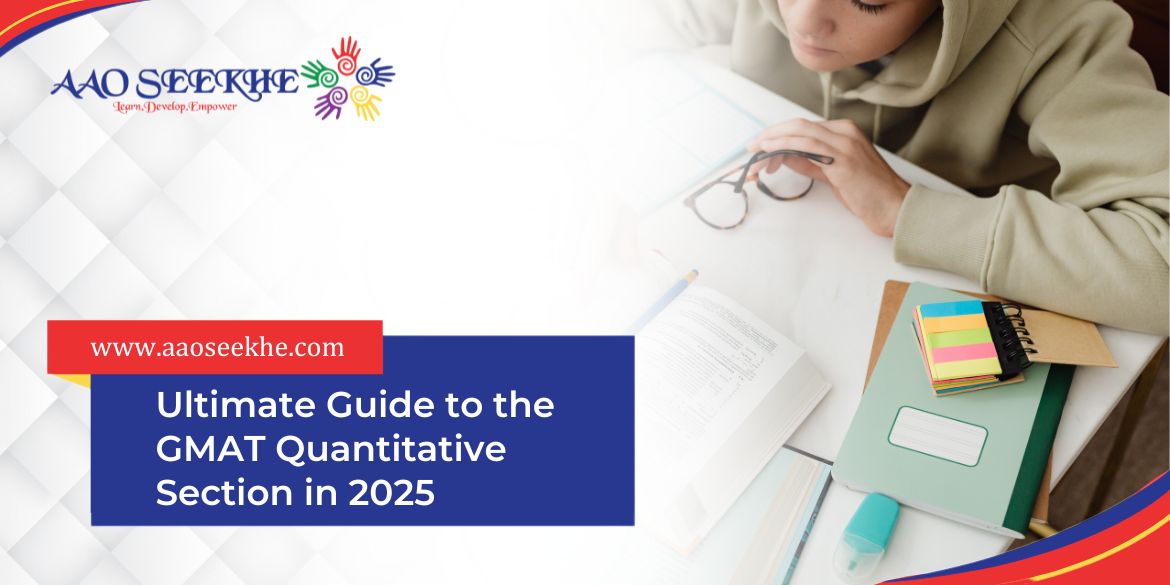
Ultimate Guide to the GMAT Quantitative Section in 2025:
The GMAT Quantitative section in 2025 will assess your ability to analyze data and derive conclusions from it and help you in your GMAT preparation in 2025. There are two basic types of questions that make it up:
- Problem Solving - Useful in the assessment of mathematical and logical reasoning skills.
- Data Sufficiency - Analyze the candidates' analytical aptitude by judging whether sufficient data is available to arrive at a conclusion.
You will have a span of 45 minutes in which to do 21 questions according to the new GMAT Focus Edition format in 2025.
Topics Covered
The GMAT Quantitative section in 2025 does not demand advanced mathematics; meanwhile, it emphasizes basic knowledge of concepts like arithmetic, algebra, and geometry that are taught at the high school level. For that purpose, some of the key topics are:
1. Arithmetic
- Properties of integers like odd/even, prime numbers, factors, multiples
- Fractions, decimals, percentages
- Ratios, proportions
- Exponents, roots
- Absolute value
2. Algebra
- Solving linear and quadratic equations
- Inequalities and absolute value inequalities
- Functions and series
- Word problems involving algebraic expressions
3. Geometry
- Lines, angles, and triangles mainly use Pythagoras' theorem and special triangle questions.
- Area of Quadrilaterals and polygons
- Circles (radius, diameter, chords, tangents, area, circumference)
- Coordinate geometry (slope, equation of line, distance between points)
4. Word Problems
- Distance-speed-time
- Work-rate problems
- Mixture problems involving solids and liquids
- Profit, loss, and interest both simple and compound
- Probability and combinatorics
Successful Tip to Clear Quant Section for GMAT:
- Know Format:
- Data Sufficiency questions require that you determine if the information supplied is sufficient. Well, it is quite different from the regular way of getting a multiple-choice question to solving for the right value.
- Wordy problems that include implicit traps like useless calculations or the inaction of determining what the problem asks you often need focusing on.
- Mental Math & Estimation:
- Knowledge will give you a hold on how to manipulate fractions, percentages, and approximations quickly.
- Good to develop a sense of when this is enough and full-blown computation is unnecessary.
- Work on Weak Areas:
- When you do a diagnostic test, identify less-commanding concepts in your studies.
- Reinforce difficult topics through practice.
- Time Management:
- The time allotted for 21 questions is 45 minutes. This gives around 2 minutes for each question.
- Do not spend too much time on a problem; just take a calculated guess and move to the next one.
- Make your way through Official Resources:
- Utilize the GMAT Official Guides, GMAT Focus practice tests, and reliable prep materials.
- Concentrate on understanding concepts, nourished by appropriate grounds, not on rote memorization of formulas.
Practice and Preparation Plan
- Month 1: Building Foundation:
- Practice and revision of elementary concepts in arithmetic, algebra, and geometry.
- Practice your questions at the elementary level until correct.
- Month 2: Refining Skills:
- Combine timed practice tests.
- Basic and advanced-level questions.
- Build your way towards data-sufficiency strategies.
- Month 3: Ready for Test:
- Conduct full-length component tests with timing now.
- Review mistakes afterwards and fine-tune your strategies.
- Practice to mimic the real test conditions for stamina building.
Learn how to create successful study road map to clear your GMAT…. READ BLOG
Conclusion:
A core knowledge of math fundamentals, combined with strategic problem-solving skills and time management, is essential for the GMAT Quantitative section in 2025. Applying a systematic study plan with constant practice will be very beneficial in maximizing your score and enhancing your overall GMAT performance.
For more valuable resources and expert guidance on GMAT preparation, visitAaoSeekhe and take your preparation to the next level.